Day in a Life of a Grower: Harvesting
Have you ever wondered if you have what it takes to grow food year-round using hydroponics?
Step inside a working farm and explore what it’s like to be a hydroponic grower! Fiona with Rocket Greens will document what it’s like to seed, transplant, grow, and harvest in a Growcer modular farm*. Plus, how Rocket Greens distributes their harvest through their subscription box which you can understand by following Fiona on a distribution day.
Harvesting
We begin preparing for our Wednesday harvests at the start of the week. There’s a lot more to a harvest day than simply taking plants out of our farm – each and every plant has a place to go!
Planning
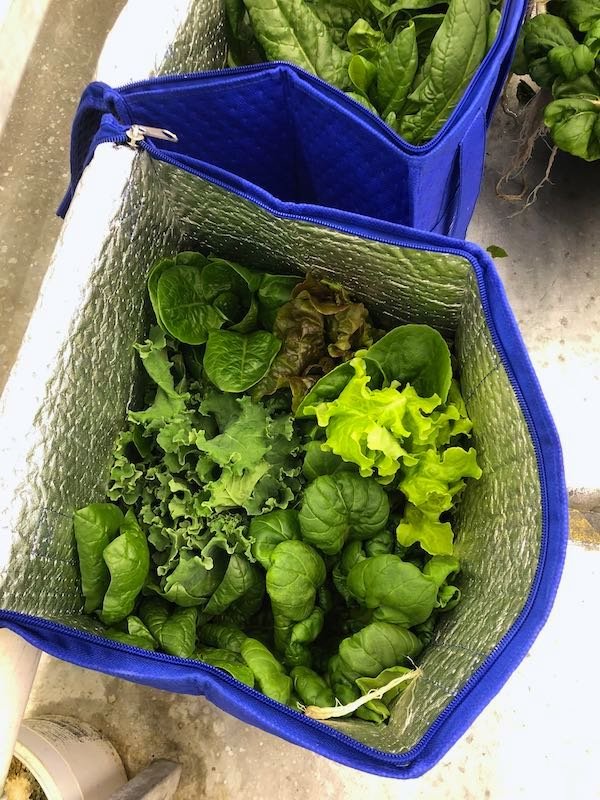
An example of what a Launch Box subscriber receives every week.
Two-thirds of what we harvest goes to our LaunchBox subscribers. Our Launch Box is a weekly subscription of locally grown greens and we offer large and small subscription sizes. We always try to keep things fresh and make sure we distribute a different variety of greens to our community members every week of the year.
In the planning process, I communicate with our customers about their needs for the week. This week we’re distributing Rocket Greens to . . .
Our kitchen
The Churchill Health Centre
The Tundra Pub
Tamarack Foods
The Northern store
Figuring out everyone’s needs helps me to plan where each plant is going in advance of our harvest. Once we’ve determined our needs for the week, I sit down to make a harvest plan. I usually do this sitting in the Growcer, so I can look at our beautiful plants in the process. Just like with seeding, I use pen and paper!

My harvest planning happens on this step stool. Usually there’s a cup of coffee within arms’ reach!
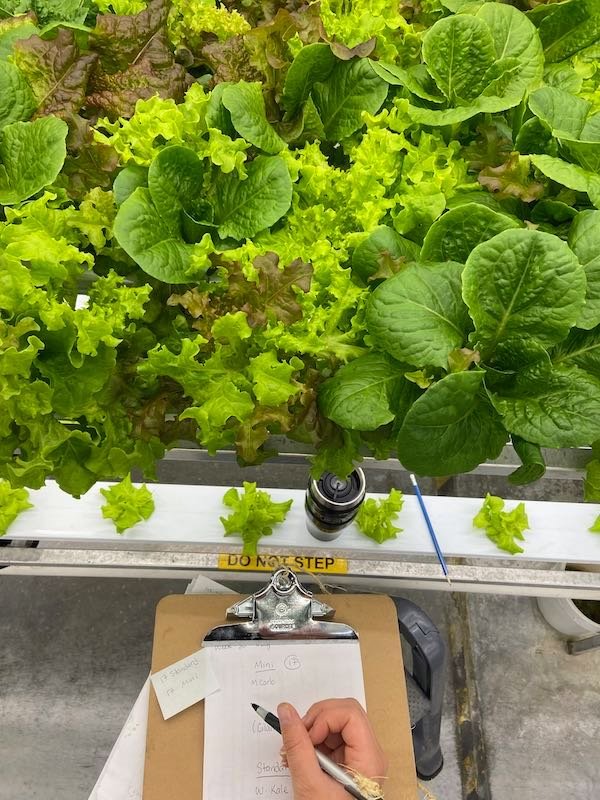
I make the harvest plan while in the Growcer so I can look at our beautiful plants in the process.
By Tuesday afternoon we’ve made sure our reusable bags are clean, our seedlings are healthy, our herbs are packaged up, and we are fully prepared to set foot in the Growcer on Wednesday morning.
After a good night’s sleep and breakfast, we suit up and get to it!
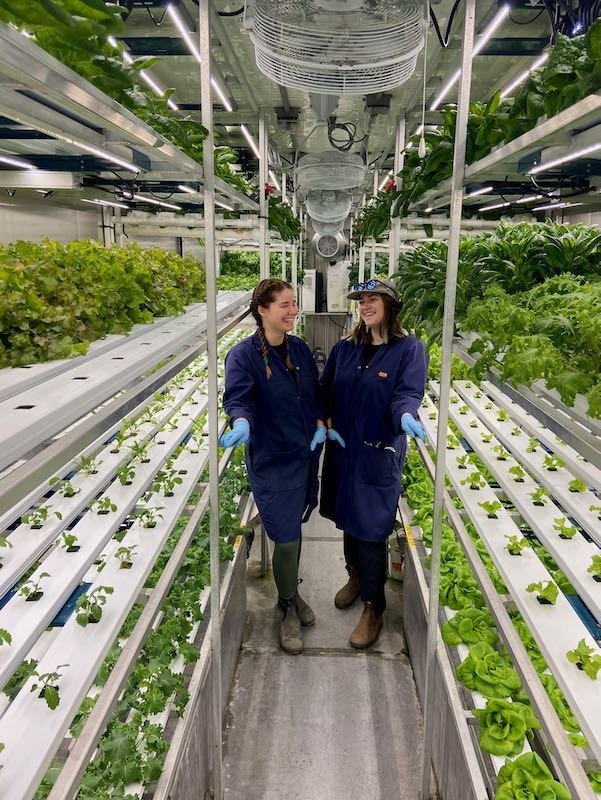
Harvest day wear generally includes gloves, lab coats and hats. (Jenna - left, Fiona - right)
This is what we bring into the farm with us:
Clipboard (with our harvest plan, Launch Box plan, weigh sheet and transplant sheet)
Two clean filters
Bowls (for weighing veggies)
Blue bags (one for each subscriber)
Large cooler bags (for packaging produce)
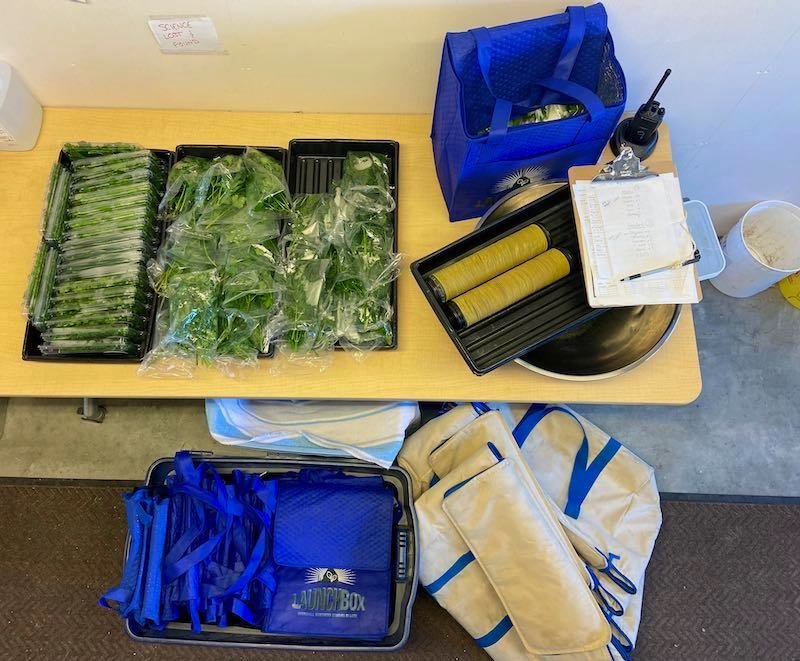
Harvest time
Harvesting itself takes about 90 minutes with two of us who are comfortable with the process and who have worked in the farm together a lot before. This doesn’t sound like a long time, but we have lots of work to do on Wednesdays.
Our Growcer container is narrower than newer models; we only have two feet of space to work in. This space is used by two of us who are harvesting, weighing, reaching, climbing on ladders, and packaging our veggies. We are moving around constantly! Jenna and I have done at least a dozen harvests together, which means we know each other’s jobs well, and can work around one another easily.
One of us is in charge of putting together the Launch Boxes – usually Jenna does this – while I package greens for grocery stores, restaurants, and our kitchen.

A batch of Launch Boxes.
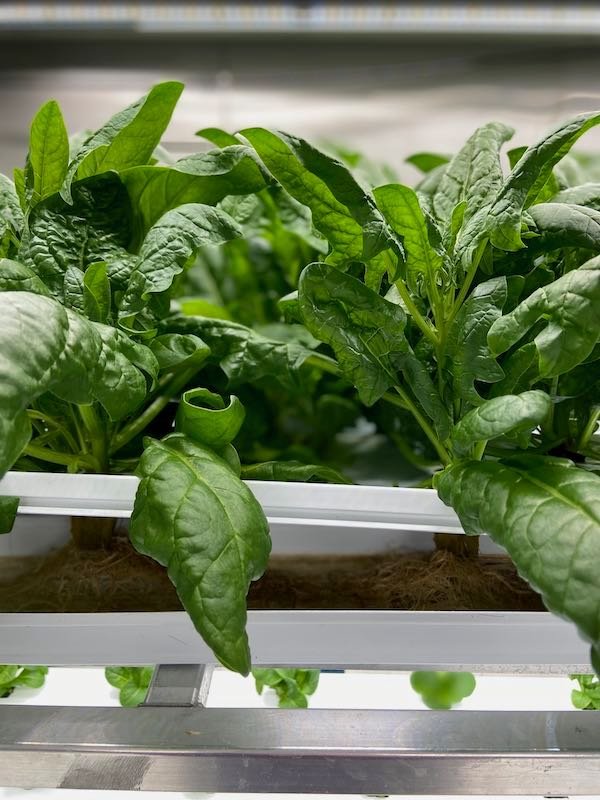
Look at how complex these roots are! Pulling these out with the plants can make a mess – they hold a lot of water.
Taking plants off the shelf is relatively straightforward, but I prefer to pull them out of their spots like this:
I prefer to pull plants out like this.
We weigh our plants so we can keep track of how well they are producing, and look back on older data to see which varieties may be struggling.
My strategy when filling Launch Boxes is to place heavy varieties like bok choy in the blue bags first, so delicate plants aren’t squished.

This lettuce is destined for the batch of Launch Boxes.

We fill Launch Boxes in batches because our space is limited.
Once the Launch Box is filled with the week’s goodies, Jenna will bring them inside and add herb packets.

The herb packets get added to the Launch Boxes last.

This area is where scientists come and go from our research station, but on Wednesdays it’s our staging area for Rocket Greens.
That’s all for harvest! The rest of the morning is spent cleaning and transplanting. An hour of cleaning shelves is normal for us – Jenna and I are speedy and thorough.

Weekly cleaning helps keep our farm spick and span.
We both like using our tray scrubbers to remove any roots, algae or tiny rockwool pieces from the trays, and we wipe each shelf clean with a paper towel afterwards. A small amount of algae growth and bits of rockwool is a totally normal part of our ecosystem. While these things don’t affect the growth of our plants, they can build up inside our system and slow down water movement if they aren’t cleaned out! Weekly cleaning helps to keep our Growcer spick and span.
Next up is transplanting, as every harvest leaves us with empty shelves that will be home to the next set of seedlings. After these seedlings find their new spots, we shift into distribution mode!
We are always shocked at how quickly harvest days roll around: we’ve barely finished cleaning up from one harvest before the next one is upon us! Each week flies by in our garden, but we try to remember to stop and appreciate what our work is doing every now and again.
*Because Rocket Greens was Growcer’s first customer, their farm represents an older version of Growcer’s modular farms that uses nutrient film technique (NFT) instead of shallow water culture (SWC) to grow greens. For the latest farm specs and yield data, download your comprehensive guide to Growcer’s farms.

Step inside the farm!
Understand how hydroponic container farms work, from common misconceptions to daily tasks.

